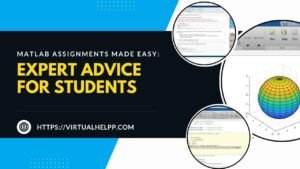Ever felt overwhelmed by the mere thought of writing an engineering research paper? You’re not alone. These papers are a crucial part of your academic journey, reflecting not just your knowledge but also your research skills and ability to convey complex ideas. So, why are they so darn challenging?

Table of Contents
ToggleWhat are Engineering Research Papers?
Engineering research papers are detailed documents that present the results of your scientific investigations. They can cover a broad range of topics, from innovative engineering solutions to theoretical analyses and experiments.
Importance of Engineering Research Papers
These papers aren’t just for grades; they’re a gateway to contributing to your field, getting published, and even paving the way for future innovations. They showcase your ability to conduct in-depth research and present your findings clearly and concisely.
Common Challenges Faced by Students
Let’s face it: writing these papers can be daunting. From selecting a topic to conducting research and presenting your findings, each step has its hurdles. But don’t worry; we’re here to break it down for you.
Understanding the Structure of an Engineering Research Paper
Before you dive in, it’s crucial to understand the typical structure of an engineering research paper. Here’s a quick rundown:
Abstract
A concise summary of your research, highlighting the key points and findings. Think of it as a movie trailer for your paper—short but packed with the essential information.
Introduction
Sets the stage for your paper, explaining the research problem and its significance. It should grab the reader’s attention and make them want to read more.
Literature Review
An overview of existing research on your topic, identifying gaps that your study aims to fill. This section shows you know your stuff and highlights why your research is needed.
Methodology
Details the methods you used to conduct your research, ensuring reproducibility. It’s like sharing your secret recipe—others should be able to replicate your study.
Results
Presents the data you collected, often with tables and figures. This section is all about the facts and figures—what did you find out?
Discussion
Interprets your results, comparing them with existing research. Here, you connect the dots and explain what your findings mean in the bigger picture.
Conclusion
Summarizes your findings and suggests areas for future research. Wrap it up with a neat bow, highlighting the key takeaways and potential next steps.
References
Lists all the sources you cited in your paper. Proper referencing is crucial for academic integrity and gives credit to the original authors.
Choosing a Research Topic
This is where it all begins. Picking the right topic can set the tone for your entire paper.
Brainstorming Ideas
Start by jotting down areas of interest. Think about the problems in your field that intrigue you or areas where you feel improvements are needed. Don’t be afraid to think outside the box—sometimes the most innovative ideas come from unconventional thinking.
Assessing the Feasibility
Make sure your topic is something you can realistically research within your time and resource constraints. Consider the availability of data, access to necessary resources, and whether you can complete the study within your timeline.
Relevance to Current Trends
Choose a topic that’s relevant and timely. This not only makes your paper more interesting but also increases its chances of getting published. Look at recent journals and conferences in your field to see what’s trending.
Conducting Thorough Literature Review
A solid literature review is the backbone of your research paper.
Importance of Literature Review
It helps you understand the current state of research on your topic and identify gaps that your study can address. This section establishes the context for your research and shows that you’ve done your homework.
Sources for Literature Review
Use academic journals, conference papers, and books. Online databases like Google Scholar, IEEE Xplore, and ScienceDirect can be incredibly useful. Don’t forget to check out dissertations and theses—they can offer unique insights and comprehensive bibliographies.
Organizing the Review
Organize your review thematically or chronologically, making sure to highlight key studies and their findings. Create a coherent narrative that logically leads to your research question. Use subheadings to break up the text and guide the reader through your arguments.
Developing a Research Proposal
Before you start your research, you’ll likely need to submit a proposal.
Key Elements of a Research Proposal
Your proposal should include your research question, objectives, methodology, and a brief literature review. It’s essentially a blueprint for your study, outlining what you plan to do and how you plan to do it.
How to Present Your Proposal
Present your proposal clearly and concisely, making sure to justify the importance of your research. Highlight the potential impact of your study and how it addresses a significant problem in your field. Be prepared to revise your proposal based on feedback from your advisor or review committee.
Designing the Methodology
Your methodology section is crucial for the credibility of your research.
Qualitative vs Quantitative Methods
Decide whether your research will be qualitative (descriptive) or quantitative (numerical). Sometimes, a mixed-methods approach is best. Qualitative methods might include interviews or case studies, while quantitative methods could involve experiments or surveys.
Data Collection Techniques
Choose the techniques that best suit your research question, whether it’s surveys, experiments, or simulations. Ensure your data collection methods are reliable and valid, and consider any ethical implications.
Ensuring Ethical Standards
Make sure your research complies with ethical standards, particularly if it involves human subjects. Obtain necessary approvals from ethics committees and ensure informed consent from participants.
Collecting and Analyzing Data
Now comes the fun part: collecting and analyzing your data.
Tools for Data Collection
Use reliable tools and software for data collection. This could be anything from lab equipment to online survey tools. Ensure your tools are calibrated and tested for accuracy.
Methods of Data Analysis
Analyze your data using appropriate statistical methods. Software like SPSS, MATLAB, R, or Python can be very helpful. Choose the right statistical tests based on your research design and data type.
Presenting Data Effectively
Present your data in a clear and organized manner, using tables, graphs, and charts where appropriate. Visual aids can make complex data more understandable and highlight key trends and findings.
Writing the Abstract and Introduction
Your abstract and introduction are the first things readers will see, so make them count.
Crafting a Concise Abstract
Summarize your entire paper in a few sentences, highlighting the key points and findings. Keep it short and sweet—around 150-250 words. Focus on the purpose, methods, results, and significance of your study.
Engaging Introduction Strategies
Start with a hook to grab the reader’s attention. Explain the significance of your research and what you aim to achieve. Provide background information and set the context for your study. Clearly state your research question or hypothesis.
Drafting the Literature Review Section
Dive deeper into the existing research on your topic.
Summarizing Key Studies
Summarize the most important studies related to your topic, highlighting their findings and methodologies. Discuss the strengths and limitations of these studies and how they relate to your research.
Identifying Research Gaps
Point out the gaps in the current research that your study aims to fill. Explain how your research addresses these gaps and contributes to the existing body of knowledge.
Detailing the Methodology
Explain your research process in detail.
Explaining Your Research Process
Describe each step of your research, from data collection to analysis. Provide enough detail for others to replicate your study. Include information on sample size, selection criteria, and any tools or instruments used.
Justifying Your Methods
Justify why you chose your specific methods and how they are suitable for your research question. Discuss any limitations of your methods and how you addressed them.
Presenting Results
This is where you show off your hard work.
Organizing Results Logically
Organize your results in a logical order, making it easy for readers to follow. Use subheadings to structure this section and highlight key findings.
Using Figures and Tables
Use figures and tables to present your data clearly and concisely. Make sure they are well-labeled and include captions explaining their significance. Refer to these visual aids in the text to help the reader understand your findings.
Discussing the Findings
Interpreting your results is crucial.
Interpreting Results
Explain what your results mean in the context of your research question. Discuss whether your findings support your hypothesis and how they fit into the broader field of study.
Comparing with Existing Research
Compare your findings with those of existing studies, highlighting any similarities or differences. Discuss possible explanations for any discrepancies and their implications.
Concluding Your Research Paper
Wrap up your paper with a strong conclusion.
Summarizing Key Findings
Summarize the key findings of your research, highlighting their significance. Emphasize how your study contributes to the field and addresses the research question.
Suggesting Future Research
Suggest areas for future research based on your findings. Discuss any unanswered questions or new avenues of investigation that emerged from your study.
Referencing and Citation
Proper referencing is essential for academic integrity.
Importance of Proper Referencing
Proper referencing gives credit to the original authors and helps avoid plagiarism. It also allows readers to locate the sources you used for further reading.
Common Citation Styles
Familiarize yourself with common citation styles like APA, MLA, and Chicago. Use citation management tools like EndNote or Zotero to organize your references and format them correctly.
Editing and Proofreading
Before submitting your paper, make sure it’s polished and error-free.
Tips for Effective Editing
Take a break before editing, read your paper aloud, and use editing tools like Grammarly. Check for clarity, coherence, and conciseness. Ensure your arguments are well-supported and your paper flows logically.
Tools for Proofreading
Use tools like spell checkers and grammar checkers to catch any remaining errors. Consider having a peer or mentor review your paper for additional feedback.
Using Virtual Help for Assignment Assistance
If you find yourself stuck, Virtual Help can be a lifesaver.
Overview of Virtual Help
Virtual Help is an online platform where you can find tutors and get assignment help. It’s available on both iOS and Android, making it easy to access assistance anytime, anywhere.
How Virtual Help Can Assist with Research Papers
Whether you need help with research, writing, or editing, Virtual Help has got you covered. You can find tutors who specialize in your field and get personalized assistance. The platform also offers resources and tools to help you manage your assignments more effectively.
Conclusion
Writing an engineering research paper can be challenging, but with the right approach, it’s definitely manageable. Remember, it’s all about breaking down the process into manageable steps. By understanding the structure, choosing a relevant topic, conducting a thorough literature review, and following a systematic research process, you can produce a high-quality research paper. Don’t forget to utilize resources like Virtual Help to make the process smoother and more efficient.
FAQs
How can I choose a good research topic?
Start by brainstorming areas of interest and assess their feasibility. Make sure the topic is relevant to current trends. Consult with your advisor and review recent publications in your field for inspiration.
What are the common pitfalls to avoid in research papers?
Avoid common pitfalls like plagiarism, improper citation, and deviating from your research question. Ensure your methods are sound and your data is accurately presented. Proofread your paper to catch any errors and improve clarity.
How do I ensure my research is ethical?
Follow ethical guidelines, particularly when dealing with human subjects. Obtain necessary approvals from ethics committees and ensure informed consent from participants. Maintain transparency and integrity throughout your research.
What tools can help with data analysis?
Software like SPSS, MATLAB, R, and Excel are great for data analysis. Choose the tool that best fits your research design and data type. Consider taking online courses or tutorials to improve your proficiency with these tools.
How can Virtual Help assist me specifically?
Virtual Help offers tutoring and assignment assistance, helping you with research, writing, and editing. You can find experts in your field who can provide personalized guidance and support, making the process less daunting and more manageable.





